- writing
What better way to understand art than to talk to the artists themselves? This section highlights the conversations that I have had with artists and artmakers in Southeast Asia in order to understand the inner cogs and screws of their creative process as well as their perspectives and connections to different socio-historical and eco-political events across the region.
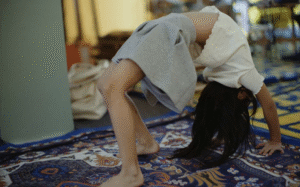
C Mag: Between Restful and Radical: In conversation with Grace Samboh
“GS: There is formality in a table’s archi- tecture. Also, it is not suitable for chil- dren of certain ages. HD: Yeah, there’s hierarchy. You also have to learn table manners in order to sit at a table. It has be- come so ingrained in us, the table, that we
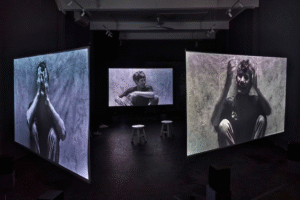
Afterall: Nguyễn Trinh Thi
Nguyễn Trinh Thi, How to Improve the World, 2020, installation view, Manzi Art Space, Hanoi. Photograph: Jamie Maxtone-Graham “… even though I work with film, a medium usually associated with the visual, I always question, even resist, the power of images. If you have seen enough of my films, you
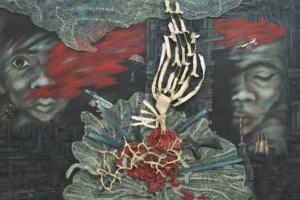
New York: Imelda Cajipe Endaya
Imelda Cajipe Endaya, Daing Ng Puso (Heart’s Plaint), 1985, oil and collage on canvas and sawali (woven bamboo mat) mounted on plywood, 48″ × 72″. “Central to Cajipe Endaya’s practice is a feminist concern with women’s social roles. Hanging in a corner of the artist’s house is one of her earliest paintings,
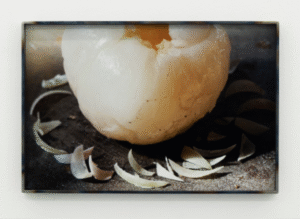
CURA: Diane Severin Nguyen
An era where war became a memory, 2018Lightjet C-Print, custom steel frame15×22.5 in. (38.10×57.15 cm)Edition of 3 + AP “If photography has often allowedus to access someone else’s pain, to feelgood about ourselves while feeling sorryfor someone else—then Diane has madea practice from pulling apart and re-en-twining these threads of
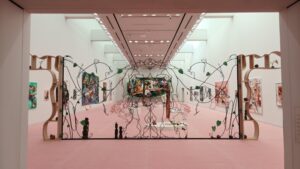
Tokyo: Kei Imazu
Installation view of KEI IMAZU’s “Tanah Air,” at Tokyo Opera City Art Gallery, 2025. Photo by Keizo Kioku. Courtesy the artist and Tokyo Opera City Art Gallery. “Tension vibrates through Kei Imazu’s oeuvre, where images that normally would never meet are interwoven to create unprecedented mise-en-scènes. In her surrealistic paintings,
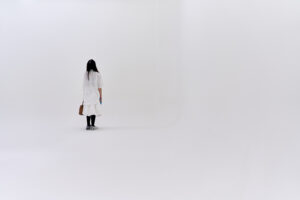
Bangkok: Nat Setthana
Nat Setthana, ‘Photopsia’, 2024, site-specific installation, quartz, cyclorama room, light, and warning text, variable dimensions. Photo by Preecha Pattaraumpornchai. Image courtesy of 100 Tonson Foundation and the artist. “My photographic practice is about the act of revisiting and deconstructing. I use photography as an attempt to deconstruct the subject of
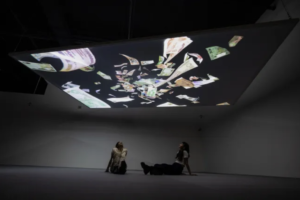
Singapore: Pratchaya Phinthong
Pratchaya Phinthong, Undrift, 2024, aluminium, ripstop nylon, digital screensaver (color, silent, infinite loop). Photos: Singapore Art Museum. ‘My childhood at the printing house cultivated my sensitivity toward physical materials. You have to touch things to understand their reasons for being. First, we respect the material for what it is, and

Kuala Lumpur: Liew Kwai Fei
For artist Liew Kwai Fei‘s solo show (23 October – 17 November, 2024), organized by The Back Room KL, titled 排一排 Side by Side 排一排, I contributed an as-told-to essay in the form of a monologue that offers an insightful portal into the working mind of one of Malaysia’s most

New York: Pinaree Sanpitak
Pinaree Sanpitak, Gathering Table, 2023, acrylic, drypoint, feathers, and gold leaf on canvas, 86 5/8 × 98 3/8”. “The title “Fragile Narratives” is a reflection on how precarious our world is, a contemplation on how we can keep balanced while still making the best out of this life. For me,

Jakarta: Haiza Putti
Haiza Putti, ‘Salutan Oranye #1,’ 2024, oil and acrylic paint, crayon on canvas, 80 x 100cm (left), and ‘Salutan Oranye #1,’ 2024, oil and acrylic paint, crayon on canvas, 100 x 150cm (right). Image courtesy of M. Revaldi. “Ancestry holds the big answers to our identity. For me, exploring and

Bangkok: Veeraporn Nitiprapha
Photo taken by Peerapat Wimolrungkarat (Add) “If you’re born in Southeast Asia, ghosts can be more real than people you can see and touch, even if their existence is made up entirely of stories. Let’s take Dao, the ghost-child in the novel. We get to know him through fragments of

60th Venice Biennale: Mark Salvatus
In the pavilion, I resurrected Lucbanin symbols as subtle gestures through which the audience can anchor their thinking and draw their own meaning.

Saigon: Trương Công Tùng
I like to think of my practice as working in a garden where many histories occur simultaneously. My family has deep agricultural roots and I grew up surrounded by nature in the Central Highlands. As a result, I see my artworks as seeds that I sow in the garden. Depending

Saigon: Nghĩa Đặng
I have gone back and forth between different forms of drawing, for example, charcoal and graphites, and recently oil pastel and embroidery on canvas.